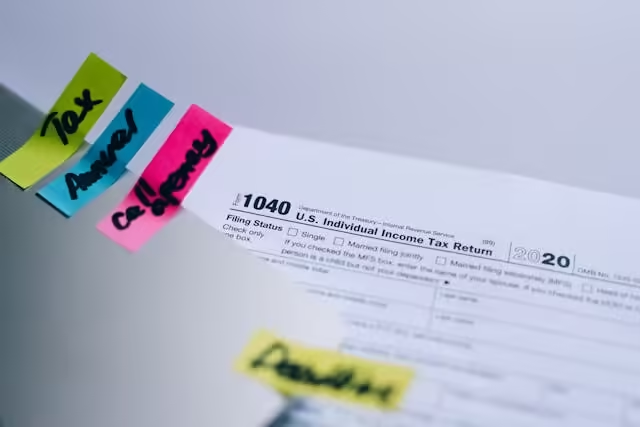Maximize Your Success: A Complete Guide to Navigating Self-Employed Tax Obligations and Deductions

Table of Contents
Self-employment offers unparalleled freedom, allowing individuals to pursue their passions, set their schedules, and be their own bosses. However, with great freedom comes great responsibility, especially when it comes to managing your taxes. Understanding your tax obligations as a self-employed individual is crucial to avoid penalties and ensure that your business remains financially healthy.
Understanding Self-Employment Tax
When you’re self-employed, you’re responsible for paying self-employment tax, which covers your Social Security and Medicare contributions. Unlike employees, who split these taxes with their employers, self employed individuals must pay the full 15.3% tax themselves. This tax is separate from your federal income tax and is calculated based on your net earnings from self-employment.
Who Needs to Pay Self-Employment Tax?
You’re required to pay self-employment tax if you earn $400 or more in net earnings from self employment during the tax year. This includes income from freelancing, contracting, or any business activity where you’re not an employee. Additionally, church employees who earn $108.28 or more are also subject to this tax.
How to Calculate Self-Employment Tax
Self-employment tax is calculated using Schedule SE (Form 1040). To determine your taxable income, you’ll need to calculate your net profit or loss from your business activities, which is done using Schedule C (Form 1040). Your net earnings are then subject to the 15.3% self-employment tax rate, with 12.4% going towards Social Security and 2.9% towards Medicare.
Deducting Half of Your Self-Employment Tax
While paying the full 15.3% might seem daunting, there’s good news. You can deduct half of your self-employment tax when calculating your adjusted gross income (AGI). This deduction, found on line 10 of Form 1040, doesn’t affect your self employment tax calculation but does reduce your overall income tax burden.
Quarterly Estimated Tax Payments
Unlike traditional employees, who have taxes withheld from their paychecks, self-employed individuals must make quarterly estimated tax payments to the IRS. These payments cover both your income tax and self employment tax.
When Are Quarterly Payments Due?
The IRS expects you to make payments four times a year:
- April 15 for income earned from January 1 to March 31
- June 15 for income earned from April 1 to May 31
- September 15 for income earned from June 1 to August 31
- January 15 of the following year for income earned from September 1 to December 31
Missing these deadlines can result in penalties and interest charges, so it’s essential to stay on top of your payment schedule.
Calculating Your Quarterly Payments
To estimate your quarterly tax payments, use Form 1040-ES. You’ll need to project your total income, deductions, and credits for the year to determine how much you owe. It’s crucial to revisit your calculations each quarter to account for any changes in your earnings or expenses.
Deductible Business Expenses
One of the advantages of being self employed is the ability to deduct business expenses from your taxable income. These deductions can significantly reduce your tax liability, so it’s important to understand what’s eligible.
Common Deductible Expenses
Some of the most common deductions for self-employed individuals include:
- Home office expenses: If you use part of your home exclusively for business, you can deduct a portion of your rent or mortgage, utilities, and maintenance costs.
- Vehicle expenses: You can deduct either the actual costs of operating your vehicle for business purposes or use the standard mileage rate.
- Supplies and equipment: Any items you purchase for your business, such as computers, software, and office supplies, are deductible.
- Marketing and advertising: Costs associated with promoting your business, including website development, advertising, and networking fees, can be deducted.
- Professional services: Fees paid to accountants, lawyers, and other professionals for business-related services are deductible.
Keeping Accurate Records
To take advantage of these deductions, it’s essential to keep detailed records of all your business expenses. This includes saving receipts, invoices, and any documentation that supports your deductions. Consider using accounting software to track your expenses throughout the year, making it easier to file your taxes and maximize your deductions.
Health Insurance Deduction
If you’re self-employed and pay for your own health insurance, you may be eligible for a health insurance deduction. This deduction allows you to reduce your taxable income by the amount you pay for premiums, including coverage for your spouse, dependents, and children under 27.
Eligibility Requirements
To qualify for this deduction, you must meet the following criteria:
- You cannot be eligible for coverage under an employer-subsidized health plan, either through your job or your spouse’s job.
- Your deduction cannot exceed the amount of your net self-employment income.
Where to Claim the Deduction
The health insurance deduction is an “above-the-line” deduction, which means it reduces your AGI. You can claim it on line 17 of Schedule 1 (Form 1040).
Retirement Savings Contributions
Saving for retirement is crucial for everyone, but it’s especially important for self-employed individuals who don’t have access to employer-sponsored plans like a 401(k). Fortunately, there are several tax-advantaged retirement savings options available.
SEP-IRA
The Simplified Employee Pension (SEP) IRA is a popular choice for self-employed individuals. You can contribute up to 25% of your net earnings from self employment, up to a maximum of $66,000 for 2023. Contributions to a SEP-IRA are tax-deductible, reducing your taxable income for the year.
Solo 401(k)
A Solo 401(k) offers similar benefits to a traditional 401(k) but is designed for self-employed individuals. You can make both employee and employer contributions, with a total contribution limit of $66,000 for 2023 (or $73,500 if you’re 50 or older). Contributions are tax-deductible, and the earnings grow tax-deferred until retirement.
Sales Tax and Other Local Taxes
In addition to federal taxes, self-employed individuals must also be aware of state and local tax obligations. This includes sales tax if you sell products or services subject to tax, as well as other local business taxes that may apply.
Sales Tax Requirements
If you sell taxable goods or services, you’re responsible for collecting and remitting sales tax to your state or local government. This requires registering for a sales tax permit, charging the appropriate tax rate, and filing sales tax returns regularly.
Local Business Taxes
Depending on where you operate, you may also need to pay local business taxes, such as a gross receipts tax, business license tax, or personal property tax on business assets. It’s essential to research the specific requirements in your area to ensure compliance.
Conclusion
Navigating the complexities of self-employment taxes can be challenging, but understanding your obligations and taking advantage of available deductions can significantly ease the burden. By staying organized, keeping accurate records, and making timely payments, you can avoid costly penalties and keep more of your hard-earned income. Remember, planning ahead and consulting with a tax professional can help you make the most of your self-employment journey.
External Links:
- Understanding Self-Employment Tax
For more detailed information on self-employment tax and calculations, visit the IRS Self-Employed Individuals Tax Center. - Quarterly Estimated Tax Payments
Learn more about making estimated tax payments and deadlines on the IRS Estimated Taxes page. - Deductible Business Expenses
For a comprehensive list of deductible business expenses, check out IRS Publication 535, Business Expenses. - Health Insurance Deduction
Discover more about the health insurance deduction for self-employed individuals in IRS Publication 502, Medical and Dental Expenses. - Retirement Savings Contributions
Learn about retirement savings options like SEP-IRAs and Solo 401(k)s at the IRS Retirement Plans for Self-Employed People.





